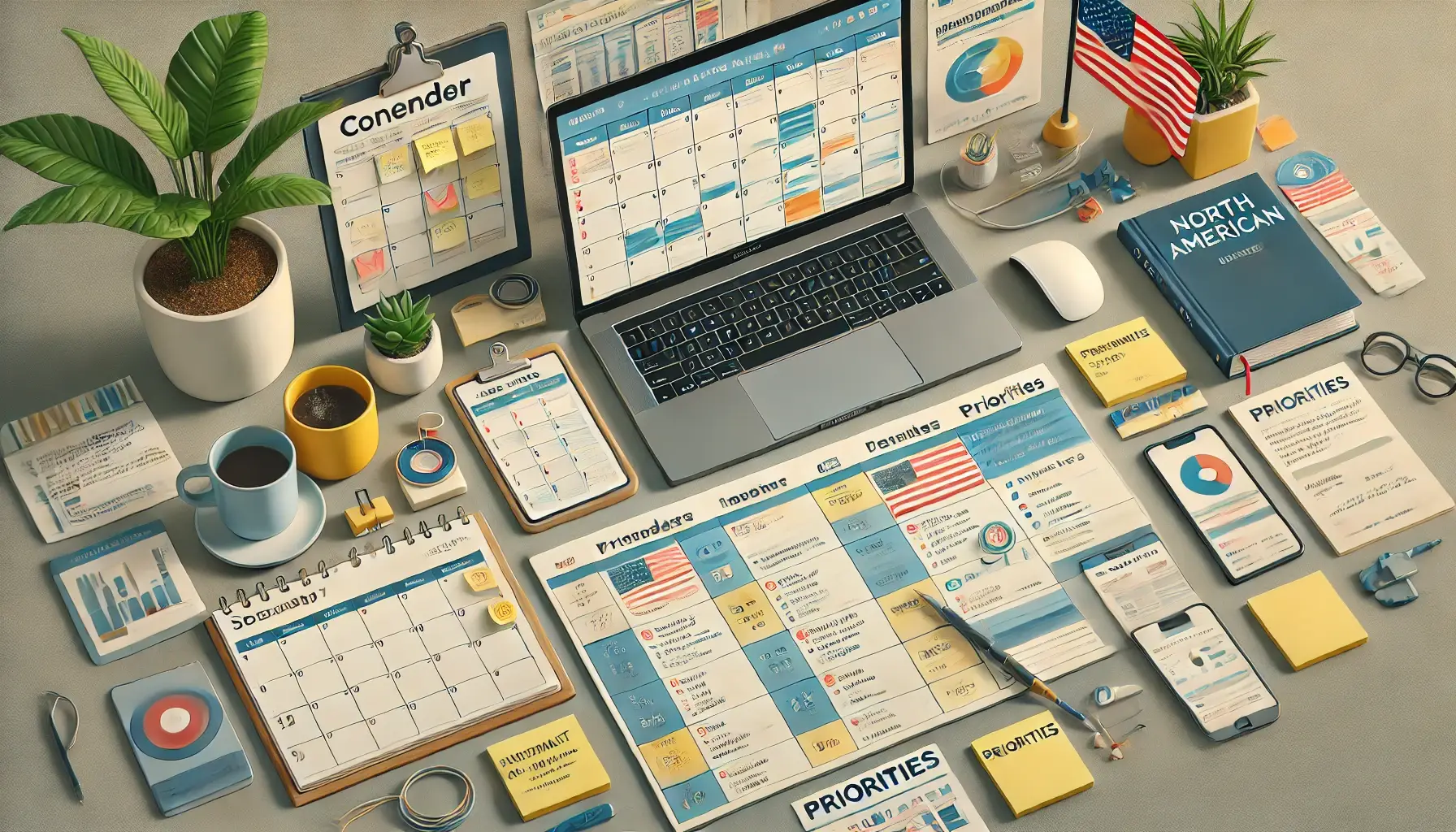Your cart is currently empty!
X-AI – Blog

The Prompt Powerhouse: Unlocking Efficiency and Innovation in AaaS Through Expert Prompt Engineering
In the booming realm of Artificial Intelligence as a Service (AaaS), a key promise resonates: automation, optimization, and revolutionary processes. Yet, unlocking the true potential of these tools lies in a crucial, often underestimated element: the prompt. A well-crafted prompt isn’t just an instruction; it’s the blueprint guiding AI agents toward delivering accurate, relevant, and impactful results. This article delves into the vital importance of crafting exceptional prompts for your AaaS, ensuring peak efficiency, continuous learning, and constant adaptation to evolving market demands. Gear up to transform how you interact with AI, catapulting your results to unprecedented heights!
Why Prompts Matter So Much
Picture a conductor without a musical score. No matter how talented, the orchestra needs precise instructions to create a symphony. In the AaaS world, the prompt is that score. It sets the tone, rhythm, and direction for the AI agent. Without a well-defined prompt, outcomes can be chaotic, inaccurate, and, at worst, useless. A solid prompt ensures the agent understands exactly what is expected, maximizing efficiency and the quality of results.
Essential Elements
Mastering the art of crafting effective prompts is akin to learning a new language. It demands practice, attention to detail, and a clear grasp of the elements that constitute a good instruction. To guarantee your prompts guide your AI agents to success, integrate these essential elements.
The Imperative of Continuous Updates and Constant Learning
In the dynamic world of AI, stagnation is the enemy of success. Language models evolve, trends shift, and market needs transform. To ensure your AaaS remains efficient and relevant, embrace a continuous update and constant learning approach.
AaaS Propelled by Smart Prompts
Theory is fundamental, but practice is what truly validates the power of well-crafted prompts. Let’s explore real-world success stories of companies that transformed their AaaS by adopting a strategic approach to prompt creation.
Now that you’ve unraveled the secret of perfect prompts, it’s time to roll up your sleeves and get to work! Share your experiences, questions, and results in the comments below. We want to hear your success stories and help you transform your AaaS into true engines of innovation. Don’t forget to subscribe to our newsletter for the latest news, tips, and tricks about AI and AaaS straight to your inbox. Together, let’s build a smarter, more efficient future!
Struggling with prompt creation? Comment below, and we’ll help you unlock the full potential of your AaaS!
Insigt Generate
Revolutionizing Family Finances: Disruptive Ideas for Economic Transformation
- Defy the conventions of home economics! Imagine yourself a revolutionary economist, armed with the audacity to challenge the financial status quo. Your mission: invent three disruptive strategies that empower middle-class families to transform their financial future in an era where traditional rules no longer apply. Pave the way for the unexpected and the bold, avoiding the beaten path of clichés. Build ideas that can be activated immediately, without the need for large investments or an advanced finance manual. We don’t just want solutions—we want pure, relentless inspiration for a secure tomorrow! Let the impossible become possible.
- Shatter the mold of personal finance! As a radical economist, armed with the courage to disrupt the existing financial order, your task is to devise three groundbreaking strategies that enable middle-class families to revolutionize their financial future in a time where old rules are obsolete. Forge a path toward the unconventional and the daring, shunning the well-trodden ground of clichés. Craft ideas that are immediately actionable, requiring no major investments or a PhD in finance. We’re not just seeking answers—we demand bold, unyielding inspiration for a secure tomorrow! Make the impossible a reality.
- Unleash your inner financial maverick! As a visionary economist, empowered by the spirit of innovation, your challenge is to conceive three game-changing strategies that equip middle-class families to reinvent their financial destiny in an age where traditional wisdom falls short. Embrace the unexpected and the audacious, venturing beyond the confines of conventional thinking. Design ideas that are instantly deployable, without the need for significant capital or a Wall Street pedigree. We’re not merely looking for solutions—we crave pure, unadulterated inspiration for a future free from financial worry! Turn the impossible into the inevitable.”
Bringing the Past to Life: How HAILUO.AI used Artificial Intelligence to Animate King Tutankhamun!
Imagine seeing the face of Pharaoh Tutankhamun, who ruled Egypt over 3,000 years ago, come to life before your eyes. With the help of HAILUO.AI, this is not only possible but also incredibly realistic. Today, I’ll show you how this AI tool is revolutionizing video creation and how you can do something similar!
https://hailuoai.video/share/2rRnnnZnn7GQ
Using a photo of Tutankhamun’s sarcophagus, HAILUO.AI applies deep learning algorithms to animate the pharaoh’s face. The tool analyzes facial features, textures, and expressions to create natural movements, such as blinking, subtle smiles, and even small gestures. The result? A video that seems to bring the past back to life!
- Realistic animations: Smooth and natural facial movements.
- Customization: You can adjust expressions and movements.
- Simple integration: Export directly to platforms like YouTube, Instagram, or TikTok.”
This technology isn’t just for historians or filmmakers. Imagine using HAILUO.AI to:
- Recreate historical figures for classes or lectures.
- Bring book or mythological characters to life.
- Create impactful content for social media.”
So, what do you think? How about trying HAILUO.AI and creating your own animation? Share in the comments which historical figure or character you’d like to see brought to life with AI! 🚀
AI & Telegram
Integrating AI-powered bots into Telegram is revolutionizing communication by automating tasks and enhancing user engagement. These bots leverage artificial intelligence to understand and respond to user inputs in a human-like manner, providing services such as answering questions, managing content, and facilitating transactions.
Benefits of AI Bots in Telegram:
- Automation of Repetitive Tasks: AI bots can handle tasks like moderation, user engagement, and content management, allowing administrators to focus on strategic aspects.
- Enhanced User Engagement: Bots like ChatGPT offer interactive content, keeping users active and engaged within the platform.
- Real-Time Analysis: Bots can analyze user behavior, providing insights that help in optimizing interactions and improving services.
Implementing an AI Bot in Telegram:
Creating an AI bot for Telegram involves several steps:
- Set Up a Telegram Bot: Use the BotFather in Telegram to create a new bot and obtain the API token.
- Integrate AI Capabilities: Utilize AI models like OpenAI’s GPT to enable the bot to process and generate human-like text.
- Develop the Bot Logic: Program the bot to handle various commands and interactions, ensuring it meets the desired functionalities.
- Deploy and Test: Host the bot on a server and conduct thorough testing to ensure it operates smoothly and efficiently.
Popular AI Bots on Telegram:
- ChatGPT Bot: An AI chatbot developed by OpenAI, capable of engaging in human-like conversations and providing detailed responses.
- GameBot: Offers interactive games within Telegram, enhancing user engagement through entertainment.
- TranslateBot: Provides instant translations, facilitating cross-language communication among users.
Future Prospects:
The integration of AI bots in Telegram is set to expand, with advancements in AI leading to more sophisticated and versatile bots. This evolution will further enhance user experience, making interactions more seamless and intuitive.


Jason: The Game-Changing GPT Duo That Delivers Flawless Answers!
Today, I created an innovative GPT agent called Jason! 🎉
Jason is part of a collaborative system designed to deliver exceptional answers through an iterative process. Here’s how it works:
- The User Asks: You submit a question or task to Jason.
- Jason Responds: Jason provides a detailed, expert-level answer.
- ContraJason Reviews: A secondary agent, ContraJason, critiques Jason’s response, identifying areas for improvement or enhancement.
- Jason Refines: Based on the critique, Jason revises the response to make it even clearer, more accurate, and complete.
- ContraJason Scores: Finally, ContraJason assigns a score between 0 and 10 to evaluate the quality of the revised response.
This process ensures answers that are not only well-informed but also critically optimized for your needs.

Creating a GPT assistant.
Create an Efficient and Well-Defined GPT Persona, tips and tricks!
Did you know that creating a GPT persona can transform how you interact with clients or solve technical problems? In this article, I’ll show you step-by-step how to build a highly efficient persona that can deliver precise answers and positively impact your processes.
1. Give the Persona a Name
The persona’s name is more than just an identifier—it reflects its purpose and function. Choose something relevant and memorable that summarizes the agent’s main goal.
Examples:
- CodeMate: A specialist assistant for software development.
- Mark Designer AI: A complete support tool for website and portal design.
- SEO Sensei: A digital consultant focused on search engine optimization.
Think of the name as the first step to creating a connection with users.
2. Define the Knowledge Base
A clear and specific knowledge base is essential for the persona to deliver accurate answers. Include the following elements:
Areas of Expertise
List the skills the persona must master. For example:
- Web Development: HTML5, CSS3, JavaScript, and modern frameworks like TailwindCSS.
- UI/UX Design: Principles of usability, accessibility, and responsiveness.
- SEO and Performance: Structured data, Core Web Vitals, and image optimization.
Tools and Technologies
Ensure the persona is familiar with widely-used tools like WordPress, Figma, or Python automation libraries.
Examples and Real Cases
Provide scenarios the persona can use to tailor responses. For instance, how to optimize the loading speed of a WordPress website with 50 plugins.
3. Establish How the Persona Should Act
To maintain consistent responses, instruct the persona on its approach:
Language and Tone
- Formal and Technical: Ideal for development teams or IT managers.
- Simple and Direct: For non-technical users or beginners.
Response Style
- Break responses into Problem, Solution, and Implementation to make them easier to understand.
- Include clear examples and practical steps.
Modern Solutions
Reinforce the use of current technologies, like modular systems or lightweight frameworks, and avoid outdated practices, such as fixed layouts.
4. Create Prompt Shortcuts
Optimized prompts save time and help ensure precise answers. Here are some useful examples:
- Website Analysis:
- “Analyze the user experience of this website: [URL]. Provide feedback on design, navigation, and responsiveness.”
- Performance Optimization:
- “Suggest improvements to reduce the loading time of a WordPress site with many plugins.”
- Content Creation:
- “Rewrite this text to make it more persuasive and professional: [text].”
- Design Suggestions:
- “Recommend a modern layout for an e-commerce site focused on mobile users.”
These shortcuts make interactions faster and more consistent, meeting users’ specific needs.
5. Use JSON Structures for Complex Prompts
For advanced interactions, organize requests in JSON format. This simplifies customization and integration into automated workflows.
Example of a JSON Prompt:
{ "objective": "Improve the navigation of a news portal", "audience": "Technical team (developers)", "expected_results": "Clear steps to implement an intuitive and responsive menu" }
This format makes communication with the GPT clearer and more efficient.6. Teach the Persona to Think Structurally
When creating a GPT, remember that you’re teaching it a way of reasoning. Here are some guidelines to ensure high-quality answers:
Context is Key
The persona should analyze the scenario before providing solutions. For example, a mobile-focused site will have different needs than a corporate website.
Prioritize the User Experience
All suggestions should aim to improve usability and meet the audience’s expectations.
Break Down Complex Problems
When handling challenging tasks, present solutions in simple and progressive steps. Use JSon structure.

Architectural Visualization Prompt for Customized Space Analysis
Create a detailed architectural visualization of the (specify here: backyard, porch, patio, front garden, etc.) of a medium-sized residence, following the (specify here: modern, rustic, Mediterranean, Japanese, etc.) architectural style. The chosen area should include a well-maintained lawn, decorative plants along the borders, and a stone pathway leading to a lounging area furnished with garden furniture that matches the specified style. Add a pergola covered with climbing plants at one end to create a cozy and inviting atmosphere. The lounging area should have a deck floor or another material suited to the chosen style. Illuminate the scene with soft, late afternoon light to convey a sense of relaxation. Include details such as decorative fences, flower pots, or traditional elements (like stone lanterns for the Japanese style or water fountains for the Mediterranean style).

Using AI Prompts to Obtain Better Responses: Unleashing the Full Potential of AI Interaction
Introduction
In a world increasingly powered by artificial intelligence, knowing how to communicate with AI effectively is more important than ever. Crafting well-thought-out prompts is the secret sauce that can turn simple AI responses into insightful, nuanced, and actionable answers. This blog post will guide you through the art and science of creating impactful AI prompts that lead to better responses and outcomes.
The Power of the Right Prompt
AI is only as good as the prompts it receives. Imagine having access to a powerful tool capable of generating data analysis, creative content, and strategic recommendations, but not knowing how to make it shine. This is where prompt engineering comes in—it’s the bridge between an AI’s potential and its practical use in everyday tasks.
Why Do Prompts Matter?
The way you phrase your question or command can significantly influence the depth and quality of the response. A vague prompt might yield a basic response, but a detailed, context-rich prompt will engage the AI more effectively, resulting in:
- More comprehensive answers
- Enhanced creativity and problem-solving
- Greater alignment with specific goals
Key Techniques for Crafting Effective AI Prompts
- Be Specific: The more details you provide, the better the response. For example, instead of saying, “Explain AI,” you could ask, “Explain how AI is used in customer service to improve response times and client satisfaction.”
- Set the Context: Include background information to guide the AI. For example, when asking for a marketing strategy, specify the industry, target audience, and objectives.
- Structure Your Prompts with Steps: Break down your prompt into steps or stages for a structured response. This technique helps the AI generate detailed, multi-part answers.
- Use Examples: Show what kind of response you’re looking for. For instance, “Create a list of blog ideas like the one below: [insert example].”
Examples of Effective Prompts
To demonstrate how prompts can lead to more insightful AI responses, here are some comparisons:
Basic Prompt: “Tell me about data analysis.” Enhanced Prompt: “What are the most effective data analysis techniques for small businesses in the retail sector, and how can they leverage AI tools for better forecasting?”
Basic Prompt: “Write a story.” Enhanced Prompt: “Write a short story about a young entrepreneur in a futuristic city who uses AI to overcome business challenges and discovers something unexpected.”
Transform Your Workflow with AI Prompts
By mastering the art of prompt creation, you unlock new possibilities for using AI. Whether you’re a marketer, researcher, educator, or business leader, tailored prompts can help you:
- Generate innovative ideas
- Streamline data analysis and reports
- Optimize content creation for blogs and social media
Conclusion: The Enthusiast’s Call to Action
Prompt engineering isn’t just a skill; it’s a mindset. Approach it with curiosity and creativity, and you’ll discover the true power of AI. Start experimenting with more detailed prompts today and watch your interactions with AI transform from basic exchanges to insightful dialogues.
Let’s get the conversation started! Share your favorite prompt techniques or ask questions in the comments. Let’s build a community of AI enthusiasts who know how to get the best responses every time!

Comprehensive Student Performance Analysis and Intervention Planning SuperPrompt
I have an Excel database that contains the following information: student name, year/grade level, scores from [tests/assignments/class participation/simulations], and overall average. I would like you to analyze this data and identify students at risk of academic underperformance. Consider a weighting for the scores from [tests/assignments/participation/simulations] (insert weights if applicable). Classify the students based on factors such as declining grades over time, low participation, and inconsistent performance, and assign a risk level (high, medium, low).
For each identified at-risk student, provide an analysis explaining the reasons for their classification and propose personalized study strategies, such as targeted reinforcement in specific subjects, effective study methods, recommended online learning tools, and organizational techniques to improve productivity. If more information or additional criteria are needed to refine the analysis, please ask.”*
Suggested Excel Layout:
- Column A: Student Name
- Column B: Year/Grade Level
- Column C: Test Scores
- Column D: Assignment Scores
- Column E: Class Participation Points
- Column F: Simulation Scores
- Column G: Overall Average
- Column H: Grade History (to identify trends in declining performance)
- Column I: Teacher’s Notes (optional)
- Column J: Risk Level (to be filled after the analysis)
- Column K: Strategy Recommendations (output generated by the analysis)
Note: Ensure that all scores are numeric and consistent in scale (e.g., 0-10 or 0-100).

